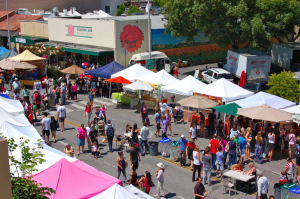|
This podcast features me talking about my recent article in the Peninsula Press on flexitarianism. [LISTEN IN] A lone rider spurs his horse as he gallops across the desolate plains. An explorer heads into the Sierras, the cathedrals of the wild. These are the classic images of the frontier and the romantic heroes who pushed into the wilderness to build the American West. They are also relics of a time when we could imagine that the human and natural worlds were separate. “It’s as if the idea of the frontier kept open the illusion that there was more nature out there that was as yet unaffected by human beings,” says environmental historian Jon Christensen, executive director of the Bill Lane Center for the American West at Stanford University. “That really never did exist.” “We now see, in the Anthropocene, that even the wilderness is a product of human forces and is very much shaped by human ideas,” Christensen says. “The city is also full of nature.” These insights will be crucial as Earth’s population continues to grow to the 9 billion people we expect in 40 to 50 years, and as we continue to cluster in urban areas. In this brave new world, the frontiers will be urban ones, where humanity and nature mix and interact. The ways in which we allow these cities to grow and absorb the population, thus affecting the natural environment within and around them, is “going to determine so much about the future of life on Earth for people and the way we live,” Christensen says. Can we design cities in a way that fosters both human and ecological health? “That,” Christensen says, “is the 9 billion-person question.” I sat down with Christensen recently to talk about the mythos of the frontier, “ecological urbanism,” and the questions that remain for Generation Anthropocene. [LISTEN IN] Originally published on Grist. Not Quite Vegetarians--'flexitarians' choose diets that minimize environmental and health damage6/4/2012
Ithaka co-op in Palo Alto is a group of 17 Stanford undergrads, grads and recent alumni who live together, pitch in for food and share house jobs, including cooking daily communal dinners. The residents have a policy of not serving meat; and they do not allow this fare to be cooked in their primary kitchen. But, while most individuals within the group consider the meat-free practices a good thing, only a minority of them actually deem themselves true vegetarians. Many of those who live in Ithaka (I’m one of them) are part of the growing trend of “flexitarianism.” It’s a term used to describe the practice of reducing the consumption of meat without completely embracing vegetarianism. |
Samantha's
Archives
July 2016
Categories
All
|

 RSS Feed
RSS Feed